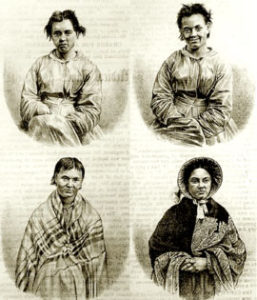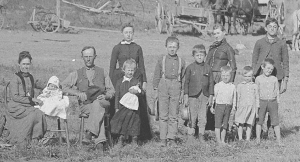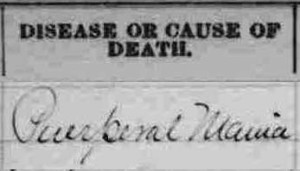The “baby blues” or its more severe form, postpartum depression, afflicted women well before the modern era. Asylum notes indicate many cases of melancholy in new mothers, as well as other types of difficulties in adjusting to a birth. In 1830 British physician Robert Gooch noted: “Nervous irritation is very common after delivery, more especially among fashionable ladies, and this may exist in any degree between mere peevishness and downright madness.”
Some new mothers may have been depressed, some simply exhausted in an era where families were large and housework involved a great deal of manual labor, while others may have been resentful of the demands motherhood placed on them and the lack of control they had in determining whether or not to have more children. Doctors and midwives alike noted the special mental state, called “puerperal insanity” that women could fall into after labor. Many believed that the stress of labor and confinement caused some mothers to kill their babies.
By 1858, puerperal insanity sometimes made up 25% of female admissions to British asylums. Surprisingly for the era, treatment was not the usual regimen of bleeding, blistering, and purging, but instead incorporated gentle common sense–plenty of rest and quiet, patience and understanding, and a good diet. Particularly for poor women, a stay in an asylum could have meant the only bit of uninterrupted rest they would ever have from the demands of a large family; some women seem to have appreciated their stays very much.


